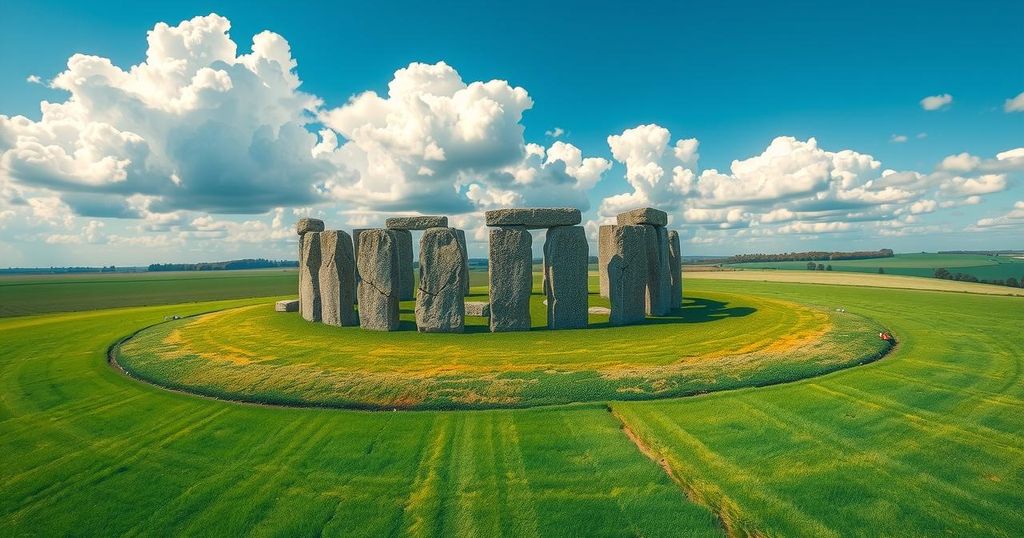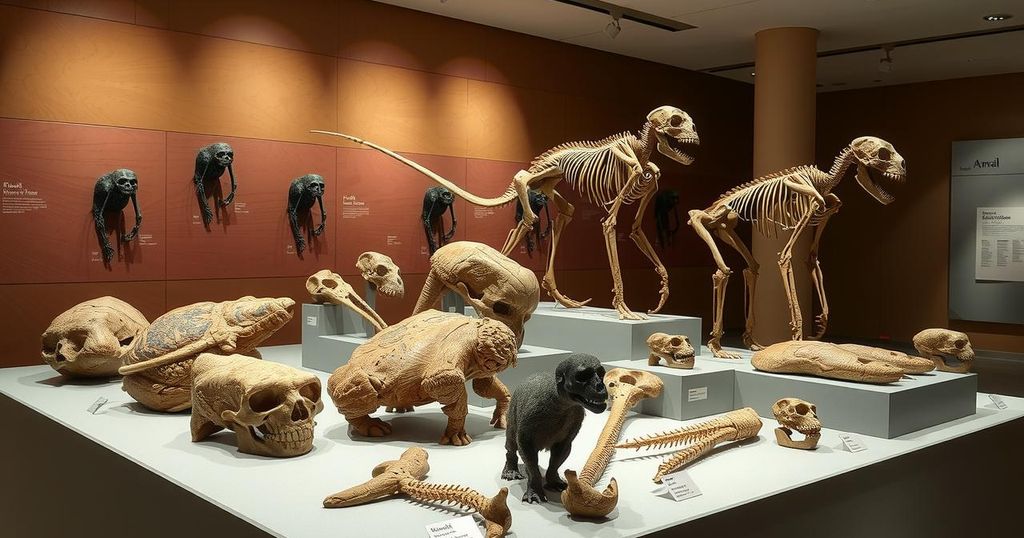New Research Suggests Stonehenge Was Built to Unite Ancient Britons
New research indicates that Stonehenge may have been rebuilt about 4,600 years ago to unify Britain’s diverse populations. The Altar Stone, transported from Scotland, symbolizes this unity amid cultural changes. It highlights intricate connections between ancient communities and suggests a complex social fabric during the Neolithic era, as researchers work to unravel its origins in the ongoing exploration of Stonehenge’s storied past.
In a revelation that adds a fascinating twist to the ancient history of Stonehenge, scientists recently posited that this iconic structure may have been rebuilt around 4,600 years ago to unify Britain’s population during a time of change. New research, published in Archaeology International, suggests the monumental Altar Stone, weighing a hefty 13,227 pounds, was not just an architectural feat but a significant marker for the Neolithic people, believed to have been transported over 435 miles from northeastern Scotland.
The Altar Stone’s origins were a hot topic this summer, with studies revealing its possible roots. Initially suggested to have come from the Orkney Islands, experts debunked that theory, leaving Scotland as the main contender. In August, evidence emerged detailing the intricate journey of this massive stone, leading researchers to theorize that Stonehenge served not just as a monument but as a beacon of unity for ancient Britons.
Interestingly, the study highlights striking similarities between Stonehenge and stone circles in Scotland—hinting at a rich, interconnected history among ancient communities. This line of inquiry builds upon previous findings, slowly unraveling why Stonehenge was so vital to the people across Britain. “It shows that this site on Salisbury Plain was important to the people not just living nearby, but across Britain,” said Mike Parker Pearson, leading the latest research.
Stonehenge’s origins date back to around 3000 BC. Over its long construction period, bluestones from Preseli Hills and sarsen stones from nearby Marlborough were utilized. The Altar Stone was likely added during a later phase of construction, possibly between 2500 and 2020 BC. Currently resting at the foot of the largest trilithon, it plays a crucial role in the theories concerning the structure’s purpose and ancient rituals.
Its alignment with the rising and setting sun during the solstices hints at potential spiritual significance, which still isn’t entirely clear. “There’s good evidence to suggest that these large stone monoliths have ancestral significance,” noted Parker Pearson, linking the Altar Stone’s placement directly to ceremonial observances.
Every winter, it’s believed that the community gathered near Stonehenge, celebrating with feasts at Durrington Walls—a reflection of its social importance. Furthermore, research points out that the ancient site was a major burial ground, reinforcing the notion that it held religious, agricultural, and astronomical significance.
Interestingly, as Britain’s population evolved, the influx of new peoples, primarily from continental Europe, coincided with key changes at Stonehenge. Parker Pearson’s research implies that this reconstruction phase was not merely about beautifying the landscape; it was a strategic response to the challenges posed by new arrivals, known as the Beaker people, who brought with them different customs and technologies.
Experts suggest that building a monument as grand as Stonehenge required immense cooperation. “They would have taken significant coordination across Britain—people were literally pulling together,” Parker Pearson observed. He emphasizes that this collaboration points to a shared cultural heritage between disparate communities in Britain.
Archaeological parallels in community structures and pottery styles reveal that cultural exchange was alive and well long before modern transport systems. The Altar Stone, in its hefty grandeur, may symbolize an alliance between diverse groups, highlighting ties that transcended geographical divides.
Yet, despite the initial intentions behind Stonehenge—uniting a diverse population—it seems the changes from the 2500 BC onwards led to the dominance of the Beaker people. Ultimately, while Stonehenge was constructed as a monumental symbol of unity among ancient peoples, it appears to have been eclipsed by the cultural shifts that ensued. “The findings of this study shed most unexpected and highly impressive new light on the history of Stonehenge,” remarked Duncan Garrow, a professor not involved in the study.
Researchers remain committed to tracing the ultimate origins of the Altar Stone, as Richard Bevins, a coauthor of the study, indicates keenly. With this ongoing scientific sleuthing, they hope to further illuminate Stonehenge’s place in the tapestry of human history, connecting geology with archaeology in an unprecedented narrative.
Recent studies suggest Stonehenge wasn’t just a stunning architectural wonder, but a significant touchstone for ancient society in Britain. Stonehenge’s reconstruction likely aimed to unify diverse populations amidst changing cultural landscapes brought by new arrivals from Europe around 2500 BC. The Altar Stone’s arduous journey symbolizes not just the physical transportation of a massive object, but the forging of connections across regional communities, reinforcing notions of shared heritage and unity even amidst societal shifts. Researchers are keen on pinpointing the stone’s original location in Scotland as they piece together this enigmatic structure’s long history, revealing ever more about our ancient ancestors’ lives and connections.
Original Source: www.cnn.com




Post Comment